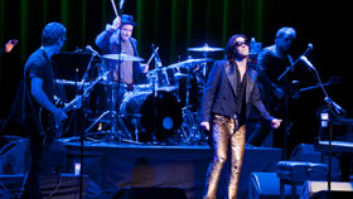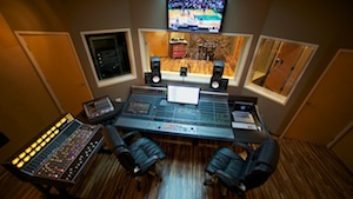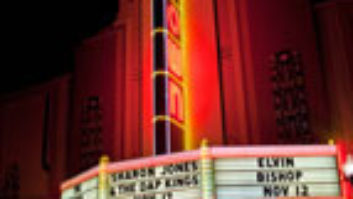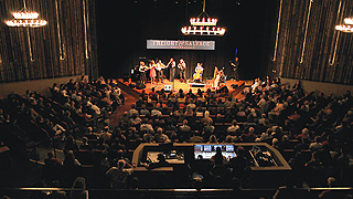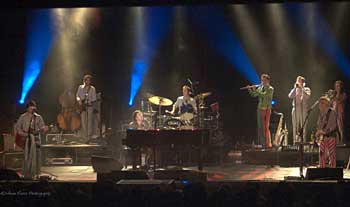
As part of a lengthy worldwide tour, Rufus Wainwright played seven sold-out UK theater shows in late-May, dates at Portsmouth Guildhall and Bristol’s Colston Hall followed by five at London’s Old Vic. Audio company Concert Sound was using its Adamson Spektrix rig for the first time on Wainwright’s shows, with five XTA DP226s controlling the system. Other gear included DiGiCo consoles.
“Adamson specifies the DP226 as its controller of choice,” says Concert Sound system tech Aron Ross. “One of the five was used as a master controller at FOH, with most of the EQ also being done in the 226s. It was quite strange not being able to fly any of the system. It was all ground-stacked, and sometimes it was quite awkward as we couldn’t put speakers where we wanted to acoustically. We ended up with speakers stacked in places that weren’t ideal. As a result, I had to re-zone the system every morning. I used all inputs on all the 226s and stretched them to their fullest extent, using as many zones as I could.”
Another challenge was the sheer amount of information in Wainwright’s music that the system had to contend with. “From solo piano and vocal via quite anarchic jazz, to full-on rock, the dynamics are incredible,” says Ross, adding, “You just sort of have to hang on! Real credit has to go to Matt Manasser at FOH. I don’t think his job is an easy one.
“I didn’t have a wireless tablet system for these dates, which I like to use. But the XTA units are very user-friendly, so I could still change things very quickly under pressure and we never ran out of headroom on anything. The Spektrix rig is great with the XTAs; it gives a very detailed sound. I was amazed at the amount of information coming out of it.”
Front-of-house engineer Manasser owns the DiGiCo D1 console that he tours with. He says the insertable processing channels (IPCs) of the console’s output stage are invaluable for such situations. “The IPCs mean I can tune any system and time-align it without having to carry a lot of outboard, so we save space at FOH, as well. It’s a very powerful facility,” he says.
The D1’s snapshots feature allows Manasser to perform a simple digital re-patch during the interval between the two bands and, by sharing some of the cables onstage, he just has to change the microphones over to give the support band’s engineer his own discrete set of channels.
He also has his own logical system for actually mixing the show, using the same channel “banks” for the same things on every artist he works with. “No matter which act I’m mixing, I know exactly where the vocals or guitar will be without having to hunt around,” he says. “It’s become a very natural way of working. I can’t believe that I’ll ever choose to tour with any other console. When you are in historic theaters, you need to be aware that live music has moved on many decades since they were built, and so it can be a challenge to meet contemporary audience expectations. However, the combination of the XTA processors and DiGiCo console allows us to meet those expectations. They also make what could be a very difficult job a lot more straightforward.”
“Rufus has a very discerning audience and they demand nothing less than perfection during a very dynamic show,” concludes Ross. “We are the first to hear complaints and we heard hardly any during this run, especially at the Old Vic, which was a very challenging venue.”
For additional information, visit www.digico.org. For additional touring news, visit mixonline.com/live/tourprofiles/.
